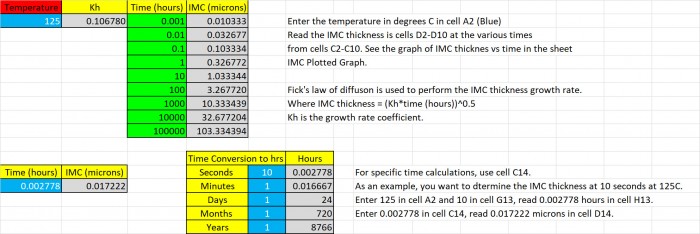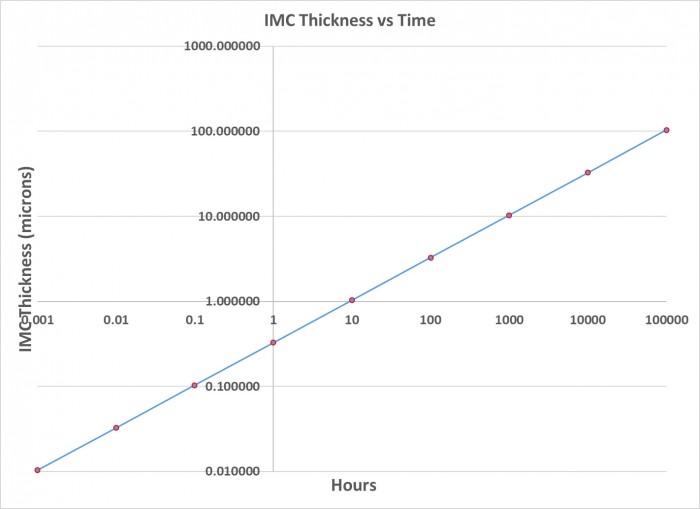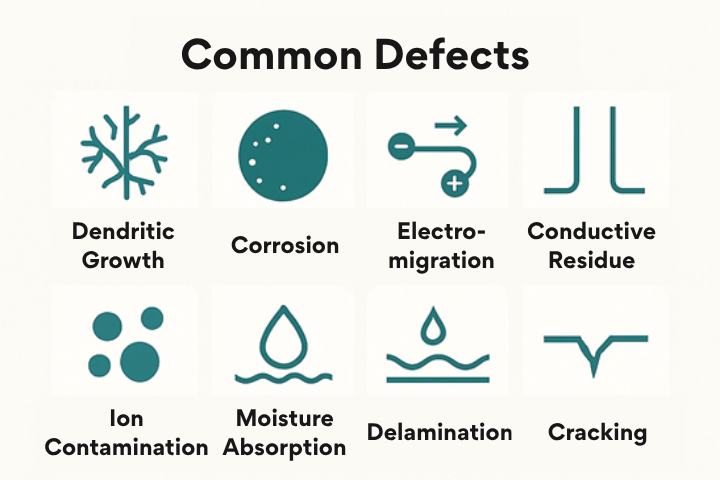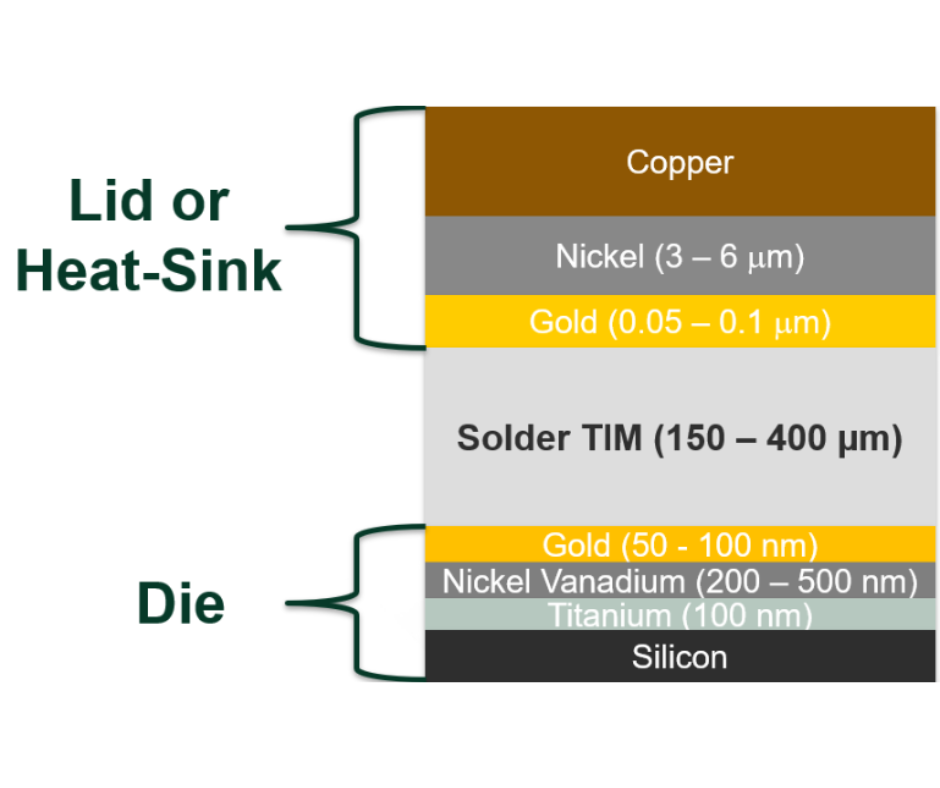Folks,
Peter writes:
Dear Dr. Ron,
I amthrilled with your Excel® program to calculate IMC thickness as a function of time. However, I wanted to calculate IMC thickness for times not listed in the software, especially short times. Please help.
Best,
Peter
Dear Peter,
I improvedthe program to have fixed (i.e. you can’t change them) times from 0.001 hours to 100,000 hours. See Figure 1.

Figure 1. The Excel®spreadsheet to calculate IMC growth as a function of time and temperature.
The results are then plotted in a graph. See Figure 2.

Figure 2. The IMC growth vs. time at a given temperature
I also added a feature that enables IMC thickness to be calculated at any time. Note that the times are in hours as this follows the Siewert paper that had the dataused to develop the equations. I added a feature to calculate times in other units to hours. As an example, say you are interested in the IMC growth in 900 days. You can enter “900” in cell D15 toget "21,600" in cell E15. Entering 21,600 in cell A13 produces a 48.02 micron IMC thickness in cell B13. The temperature, 125°C, wasentered in cell A2.
My first post on this topic is here and the second post ishere. Reading these posts will help you to understand the derivation of the equations in the spreadsheet. As mentioned before, Siewert’s work was performed in the 70°C to 150°C range for up to 900 hours. So, times and temperatures outside of these ranges would be extrapolations, which are always a risk. However, my sense is that they would be correct to a factor of two.
If you would like a copy of the Excel spreadsheet, send me an email at [email protected].
Cheers,
Dr. Ron



